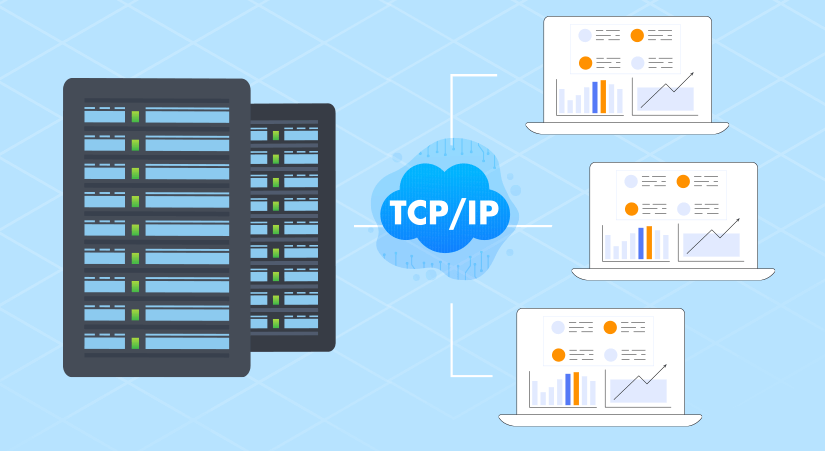Deep Dive into TCP/IP Tuning for High-Throughput Servers
In today’s digital landscape, seamless data flow is no longer a luxury—it’s a necessity for businesses operating mission-critical workloads. As applications scale and user expectations rise, optimizing TCP/IP settings has moved from a niche technical concern to a central pillar of server performance and reliability. For organizations deploying high-throughput services—whether supporting global e-commerce, real-time analytics, or financial transactions—fine-tuning the TCP/IP stack can be the difference between responsive user experiences and frustrating bottlenecks.
Understanding TCP/IP Performance in Modern Infrastructure
TCP/IP is the backbone of network communications, responsible for reliable data transfer across distributed environments. At its core, Transmission Control Protocol (TCP) manages the flow of information, ensuring packets are delivered, ordered, and retransmitted if needed. Internet Protocol (IP) handles addressing and routing, guiding data to its destination. But default configurations, while functional, are rarely optimal for the demands of today’s high-speed, high-availability infrastructure.
Performance tuning of TCP/IP is multifaceted. It involves adjusting buffer sizes, optimizing congestion and flow control mechanisms, and aligning hardware and software resources to minimize latency and maximize throughput. For enterprises leveraging dedicated servers or hybrid cloud—such as those hosted by Dataplugs—these adjustments can unlock measurable gains in application responsiveness and network efficiency.
The Foundations: Key Concepts in TCP/IP Tuning
Before diving into advanced tuning, it’s critical to grasp several foundational concepts:
- Bandwidth vs. Throughput: Bandwidth is the theoretical maximum data rate of a connection. Throughput is the actual rate achieved—often limited by protocol configurations, hardware, and current load.
- Latency and Round-Trip Time (RTT): Latency is the delay in data transmission. In TCP, RTT is vital because acknowledgments determine how quickly new data can be sent.
- Bandwidth-Delay Product (BDP): This metric helps determine the optimal buffer size for a given network link by multiplying bandwidth by RTT. Matching buffer sizes to BDP ensures maximum utilization of available capacity, especially across long-haul or high-latency routes.
Practical Steps for TCP/IP Throughput Optimization
- Right-Size Buffering for Your Workload
TCP receive and send buffers temporarily store data as it’s transmitted or received. Under-provisioned buffers lead to packet loss and retransmissions, while oversized buffers can introduce latency (bufferbloat). The ideal buffer size is closely tied to the BDP of your environment. On Linux, parameters like net.ipv4.tcp_rmem and net.ipv4.tcp_wmem can be tuned, while Windows Server offers TCP autotuning and performance counters for visibility. - Leverage TCP Window Scaling and Flow Control
TCP’s window scaling feature enables larger receive windows—essential for high-throughput links with significant delay. This allows more unacknowledged data to be in flight, preventing the sender from idling while waiting for acknowledgments. Flow control mechanisms ensure that fast senders don’t overwhelm slower receivers, preserving data integrity and application stability. - Tune Congestion Control Algorithms
Modern operating systems offer a variety of congestion control strategies, such as CUBIC and BBR (Bottleneck Bandwidth and RTT), which adapt to changing network conditions more efficiently than legacy algorithms. Selecting the right algorithm can yield significant improvements in both throughput and latency, especially for applications sensitive to jitter or variable load. - Optimize the Network Stack and Hardware
At the hardware level, enabling features like jumbo frames (when supported end-to-end), configuring high-speed NICs, and ensuring drivers are up-to-date can help eliminate bottlenecks. On the software side, disabling unnecessary offloads or adjusting interrupt coalescence can make a difference in environments with mixed latency and throughput requirements. NUMA-aware tuning and CPU affinity can also help distribute network processing load efficiently across multicore servers. - Monitor, Test, and Validate
Continuous monitoring is essential. Tools such as iperf3, system performance monitors, and resource counters help identify bottlenecks and validate the impact of changes. Establishing a performance baseline before tuning—and re-testing after adjustments—ensures that improvements are real and sustainable. This iterative approach is key to adapting as workloads and traffic patterns evolve.
TCP Flow Control and Stability at Scale
Flow control isn’t just about maximizing speed—it’s about ensuring stability, especially under variable load. For enterprises serving a global user base, sudden spikes in demand or unpredictable network conditions can test even the best infrastructure. Adaptive TCP tuning, combined with robust hardware and intelligent routing, helps maintain both high throughput and low latency, keeping mission-critical services responsive and reliable.
How Dataplugs Hong Kong Dedicated Servers Enhance TCP/IP Optimization
For organizations that demand total control, a dedicated server platform is essential.Dataplugs’ Hong Kong dedicated servers are built to support advanced TCP/IP tuning, offering exclusive hardware access, robust bandwidth, and low-latency CN2 connectivity to Mainland China and beyond. These servers feature enterprise-grade Intel and AMD processors, ECC memory, and NVMe SSD storage, allowing you to fine-tune every aspect of your network stack—from buffer allocation to kernel-level parameters.
With resources not shared with other tenants, you eliminate the unpredictability and contention common in virtualized or shared environments. This means your TCP/IP settings will consistently deliver the performance you expect, whether you’re running high-volume e-commerce, real-time analytics, gaming servers, or global SaaS platforms. Dataplugs’ reliable infrastructure also includes 99.9% uptime, 24/7 onsite support, and flexible upgrade paths, ensuring your environment can adapt as business needs change.
Conclusion: Achieve Peak Network Performance with Dataplugs
Robust network optimization is a continuous journey that demands the right combination of technical insight, active monitoring, and an infrastructure built for performance. With Dataplugs dedicated servers in Hong Kong, you gain exclusive access to resources and the control necessary to unlock the full potential of your TCP/IP stack—supporting faster data transfers, lower latency, and consistent reliability for users across Asia and beyond.
Whether your goal is to enhance connectivity to China, deploy next-generation applications, or ensure your infrastructure remains agile for future demands, Dataplugs delivers both the platform and expertise to support your business objectives. For tailored solutions or expert guidance, reach out to the Dataplugs team via live chat or email at sales@dataplugs.com.
